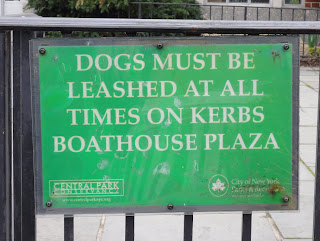



 I started jogging in Central Park in 1978 at a time when the sport of running was just gathering steam and when women runners were few and far between. And I have run there ever since and seen its many changes. Back when I started to be a park regular it was a wild and wooly space in what was also, then, a wild and wooly city. Like many of the surrounding streets, the park was rough, filthy and dangerous. Running around the reservoir - ragged, overgrown and almost completely deserted - was taking your life in your hands, particularly for a woman. But with all its dirt and fearsome qualities, its grassless fields and crumbling footpaths, it was still a place of refuge for the citizens of the city. Warm weekend afternoons brought out the hippies, the ball-players, the magicians and the families with their liquor and their barbecues. Yes, the smell of marijuana pervaded the air, but so did the sounds of children and the strains of music from the string quartets, garage bands and solitary troubadours who returned week after week to the same locations collecting faithful audiences who would sprawl on the ground to listen for as long as the musicians would play. The park was dangerous after dark and raucous on the days when parade watchers would spill into it from Fifth Avenue. It was sinister in places like the Ramble and the woods at the north end. It was disorganized and threadbare, but it nonetheless pulsed with a sort of edgy, interesting energy like an embarrassing but idiosyncratic backyard for the lively, crazy, throbbing city around it.
I started jogging in Central Park in 1978 at a time when the sport of running was just gathering steam and when women runners were few and far between. And I have run there ever since and seen its many changes. Back when I started to be a park regular it was a wild and wooly space in what was also, then, a wild and wooly city. Like many of the surrounding streets, the park was rough, filthy and dangerous. Running around the reservoir - ragged, overgrown and almost completely deserted - was taking your life in your hands, particularly for a woman. But with all its dirt and fearsome qualities, its grassless fields and crumbling footpaths, it was still a place of refuge for the citizens of the city. Warm weekend afternoons brought out the hippies, the ball-players, the magicians and the families with their liquor and their barbecues. Yes, the smell of marijuana pervaded the air, but so did the sounds of children and the strains of music from the string quartets, garage bands and solitary troubadours who returned week after week to the same locations collecting faithful audiences who would sprawl on the ground to listen for as long as the musicians would play. The park was dangerous after dark and raucous on the days when parade watchers would spill into it from Fifth Avenue. It was sinister in places like the Ramble and the woods at the north end. It was disorganized and threadbare, but it nonetheless pulsed with a sort of edgy, interesting energy like an embarrassing but idiosyncratic backyard for the lively, crazy, throbbing city around it.I actually loved the park back then. It had big problems, but it belonged to us, the diverse, rag-tag people of Manhattan. So when the Central Park Conservancy began its giant clean-up some years back, I had mixed feelings. I was definitely relieved, on the one hand, that the reservoir would be safer and that the beautiful old structures - the bridges and pavilions - would be restored and preserved. But on the other hand, I was a little leery of the fact that the bulk of the money for the project was going to come from private donations and that a large part of those donations were going to come from people who lived along the periphery of the park whose interests weren't the same as, for instance, those who came down from Harlem for a bit of fresh air on a hot summer afternoon. I hoped for the best, however: for a green, clean and safe version of the park I had come to love. But as one by one the ball fields, the grassy knolls, the stands of trees and the pathways were cordoned off and prettied up, it became increasingly clear that the park that was once the haven for real city people was becoming another jewel in the crown of a city that was more and more thinking of itself as a sort of urban Disneyworld.
I certainly won't deny that the Conservancy has met their mandate brilliantly. The flora couldn't be prettier, all weeded and pruned and wood-chipped into nice, neat areas. The buildings and bridges are in tip-top shape, restored to fair-thee-well. The baseball diamonds are worthy of the finest stadiums and the lawns are green and immaculate. In fact it is a picture
perfect city park - almost like a museum. And, like a museum, it is now a place full of rules and regulations not to mention barriers and fences. And as if the metal demarcations aren't enough to keep visitors in line, there are signs everywhere as you can see in the photos above. No bicycles, no dogs, no picnicking, nothing but tranquil ("passive") activity, no ball-playing, no tree-climbing, no noise. In other words no activities for which parks were created.
When I run and walk in the park now, it is with a sad mixture of awe, nostalgia and more than a modicum of anger. Awe for the wonderful vision of Olmstead and Vaux which has been resurrected with sparkling accuracy, nostalgia for the park I knew when I was young, and indeed anger that what was once a colorful, noisy, multicultural playground is now a showpiece for the tourists, the white and the well-behaved.